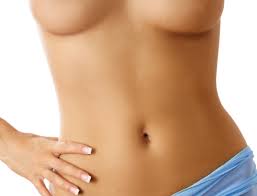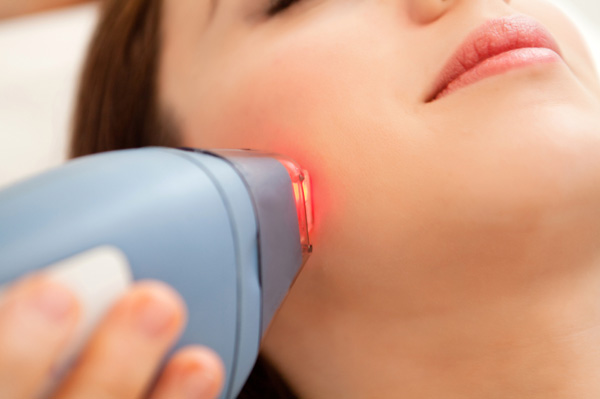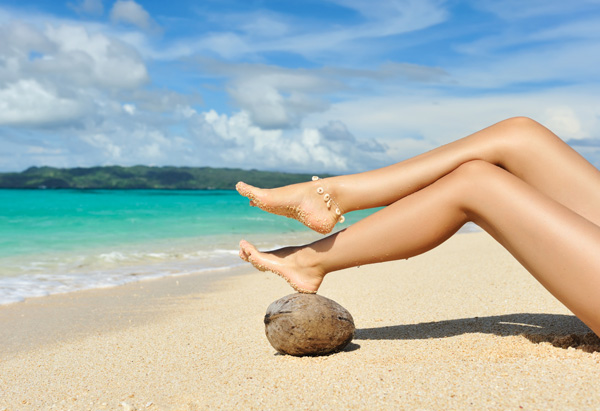By Sandra Tyler
11 Nov, 2015
Face Lift, facial rejuvenation, Laser, skin care
Chemical Peel, Erbium Laser, face lift recovery, facelift, Facial Rejuvination, IPL Laser, Laser, laser treatment, Recovery
Looking Your Best Afterwards; Post-Surgical Makeup Techniques
You may be a little concerned about what you’ll look like while you’re still healing. Bruising, swelling, pigment abnormalities and visible incisions are common after many plastic surgery procedures. The following steps can help camouflage many of these telltale signs of surgical recovery.
- You should wait a few days, or possibly, as in the case laser resurfacing, two weeks or more. Of course, applying make-up to actual incision lines is always prohibited until stitches are removed and the wound has entirely closed.
- After you have your doctor’s permission, you’ll need to learn what type of make-up and application technique is best for you. The two basic cosmetic camouflage techniques are concealing, which hides bruises or scars and neutralizes red or yellow tinted skin, and contouring, which helps hide swelling while enhancing your best features.
- Concealing those marks and color inconsistencies can be done with two products: foundation and concealer. For your foundation, choose a thicker, heavier product for those areas that are discolored, and perhaps another, lighter foundation for other areas of the face. (It’s often difficult to find a color that looks good on the entire face anyway.)
- The best concealers are pigment-rich products that are thick and dry to the touch. (Good choices are MAC Studio Conceal and Correct Concealer Duo and Laura Mercier Secret Camouflage both available at Macy’s they are terrific too!) These are a little more difficult to apply than concealers that are waxy or creamy, but they have the advantage of staying put – and that’s what you need most from a concealer.
- To get the best color match, the two-toned concealer set is best, one concealer that closely matches your skin tone and a second concealer that has a slightly more yellow tone. The yellow tint will help to cancel out any red or blue tones you want to minimize. But don’t go overboard! Really yellow or green shades will just look like yellow or green marks on your skin!
- Under all makeup, use a light moisturizer that contains an appropriate level sunscreen. Sunscreen is essential, especially, after procedures like a chemical peel or laser resurfacing, which uncover new layers of skin. Apply the screen first, foundation second, and concealer third.
- Apply small amounts of make-up at a time, you can always add more. Adding more make-up is much easier than rubbing off excess, especially if the area is still sensitive to touch.
- Contouring, the second camouflage technique uses different shades of make-up to create illusions of highlights and shadows. Manipulating these illusions can enhance certain features while disguising swelling. You’ll need three or four different shades of foundation. Stick, powder or cream foundations work best. Simply apply lighter colors wherever you want an area to stand out, and darker shades where you want the area to seem to recede. If your shades are too light or too dark, blend one or more colors with your fingers before applying.
- The key to successful contouring is blending. If you apply too much dark make-up, it is very difficult to blend it fully so that it looks like a natural shadow instead of a smudge of make-up.
- To enhance your cheekbones you want to put the darker make-up in the hollow of the cheek (Suck in your lips, making a “fish face” to see where the hollow is compared to the cheekbone). Then add a lighter color the actual cheekbone.
- To make a swollen nose appear narrower use a small brush to draw a thin line of the dark make-up down both sides of the nose, starting at the eye socket. Then, using make-up sponge, blend the color down the sides of your nose. Be sure to fully blend, there should be no lines of make-up showing. You may add a narrow, lighter shade down the center if you want.
- For swollen eyes, use contouring make-up to give them the appearance of greater depth. Apply shadow on your eyelid from just above the iris straight out; do not follow the downward curve of the eyebrow bone. Just underneath the arch of the eyebrow apply a lighter shade of make-up. And don’t forget to blend.
If you’re still anxious about how you look after surgery, practice your concealing and camouflage techniques.
More
Whether it means dropping a few pounds or putting on mascara in the morning, everyone wants to look good. But do you really want to look good—or do you want to be looked at?
An Ohio woman is raising money for breast implants, which will help improve her self-esteem, she says, but instead of picking up some extra shifts at work, she’s taking her cause to the streets. Thirty-seven-year-old Chrissy Lance, clad in a silver bikini and perched on a shiny motorcycle, has been panhandling at the side of the road to pay for her plastic surgery. You’ve got to give her props for putting it all out there to get what she wants, but her quest for $5,000 to pay for a boob job seems to be as much about attention as self-improvement.
Maybe it’s just me, but if I ever decided to opt for plastic surgery over my real breasts, I wouldn’t be parading around in next to nothing with strangers ogling my goodies. I would feel completely objectified. There’s got to be a better way! I’d keep it a private matter, maybe ask family and close friends for loans—or invest in a padded bra. But no busking on the street corner.
How far would you go to pay for plastic surgery?
More
By Sandra Tyler
19 Apr, 2015
Botox, Breast Augmentation, Butt Augmentation, Comfort Anesthesia, Cosmetic Getaways, Ear Surgery, Esthetician, extractions, Face Lift, facial, facial rejuvenation, facials, Featured Procedures, Fillers, hair removal, Juevederm, Labiaplasty, Laser, liposuction, Male Surgery, Misc, News & Blogs, Rhinoplasty, skin care, spa, Special Offers, Tummy Tuck
breast augmentation, facelift, lifestyle lift, lifstyle, liposuction, mommy makeover, tummy tuck
The 2014 plastic-surgery statistics will be released later today by the American Society for Aesthetic Plastic Surgery (ASAPS). Thanks to an advance peek, I can report that butts are getting bigger, while breasts are getting smaller.
Buttock augmentations are up 86 percent over 2013. Michael C. Edwards, a plastic surgeon and the president of the ASAPS notes that most women don’t want giant backsides, they just want more shapely ones. The other big news is breast revisions, which are up 30.4 percent. Many attribute that rise to aging implants in need of replacement, along with many women’s desire to switch from saline to silicone-gel-filled implants, which may not have been available when they originally had surgery. What’s more, insiders say most of these women are exchanging their old implants for smaller replacements.
The other news in the numbers is a five percent drop in overall procedures: 10,663,607 in 2014, down from 11,419,610 in 2013. The decrease was mostly in minimally-invasive procedures like Botox and fillers. No explanation for this was offered by the ASAPS, but could it be what I call injection fatigue? Many women I’ve spoken to don’t want to return again and again for refills. Surgical procedures fell only 1.5 percent from 1,883,048 to 1,764,956, a drop that the number crunchers say is not statistically significant.
Fat—and getting rid of it—is still a high priority. In recent years the top surgical procedures for women have flipped back and forth between breast implants and liposuction. In 2014, liposuction held the number one spot, followed by breast augmentation (down 8.5 percent), tummy tuck, blepharoplasty (or eye lift), and in fifth place, the breast lift. Facelifts are in eighth place.
Liposuction may still be king (or is it queen?) in the surgical department, but non-surgical fat reduction with devices such as CoolSculpting and VASERshape rose a whopping 42.7 percent, from 94,922 in 2013 to 135,448 in 2014. That number could rise even more this year if ATX-101, an injection for fat reduction under the chin, gets FDA clearance, which it’s expected to receive.
More
Dr. Frank Filiberto is offering a revolutionary approach to facial rejuvenation. By eliminating the dangers of general anesthesia, substantially reducing the cost, and shortening long recovery times, Mini Lift is a better and safer alternative to traditional procedures. With nearly 3500 procedures to date, this extraordinary Head, Neck and Facial Plastic Surgeon has mastered this revolutionary procedure.
Our priority is our patients’ safety and happiness. We are proud of our no complication rate and our excellent customer care. But don’t take our word for it. Our patients are extremely satisfied with their Mini Lift experience and we know you will be, too!
More
By Sandra Tyler
16 Mar, 2015
Esthetician, facial rejuvenation, facials, Laser, skin care, spa
boost collagen, broken capillaries, brown spots, facial redness, Facial Rejuvenation, intense pulse light, IPL, laser treatment, LED, light-emitting diode, photo facial, spider veins, treat acne
Laser resurfacing is a generic term for a skin treatment that uses some kind of light-based technology. Photo facials (sometimes called foto facials ) have a number of different uses, but are mostly used for treating brown spots, broken capillaries, and boosting collagen.
The two main types of technology used for photo facials are LED (light-emitting diode) and IPL (intense-pulsed light). They are completely different, so it’s extremely important to understand which photo facial technology is being used. That way you are more likely to get the results you hope to achieve.
An LED photo facial is a very gentle treatment that uses narrow spectrum light to boost collagen, which creates plumper, younger-looking skin, or to kill the bacteria that causes acne. This type of photo facial is more likely to be found in a day spa with a serious focus on esthetics.
LED photo facials are painless, cool and relaxing, and (unlike IPL or laser treatments) carry no risk of burning. The best results come after a series of photo facial treatments. To begin, a series of six treatments with a one-to two weeks between is recommended. After that, maintain with a treatment every month or two. It can be part of a facial or a stand-alone treatment.
LED photo facials are a good choice for people who want to boost collagen or treat acne. Their collagen-boosting, facial rejuvenation properties have been proven with medical research. The results won’t be as dramatic as plastic surgery, but it’s a gentler, more natural, less expensive way to go.
Medical spas have IPL (intense-pulsed light), which is a type of laser treatment, a photo facial. An IPL photo facial can treat a variety of skin conditions such as brown spots, broken capillaries, spider veins, and facial redness. An IPL photo facial delivers a bright blast of light at very high energy levels through a hand-held device. While some IPLs have cooling devices, it can be uncomfortable, even painful.
An IPL photo facial is the better choice if you have brown spots, broken capillaries or overall redness, called diffused facial redness. The number of IPL photo facials you need will vary depending on the condition you’re treating, the results you want, and how your skin responds.
Photo facials work best in conjunction with a regular skin care routine that you develop with your esthetician.
More
Laser Hair Removal
In this method, a laser destroys hair follicles with heat.
Sometimes it is recommended that a topical anesthetic product be used before a laser hair removal procedure, to minimize pain. In these cases, FDA recommends that consumers discuss with a medical professional the circumstances under which the cream should be used, and whether the use is appropriate.
Those who decide to use a skin-numbing product should follow the directions of a health care provider and consider using a product that contains the lowest amount of anesthetic drugs possible. FDA’s Center for Drug Evaluation and Research has received reports of serious and life-threatening side effects after use of large amounts of skin-numbing products for laser hair removal.
Side effects of laser hair removal can include blistering, discoloration after treatment, swelling, redness, and scarring. Sunlight should be avoided during healing after the procedure.
Epilators: Needle, Electrolysis, and Tweezers
Needle epilators introduce a fine wire close to the hair shaft, under the skin, and into the hair follicle. An electric current travels down the wire and destroys the hair root at the bottom of the follicle, and the loosened hair is removed with tweezers.
Medical electrolysis devices destroy hair growth with a shortwave radio frequency after a thin probe is placed in the hair follicle. Risks from these methods include infection from an unsterile needle and scarring from improper technique. Electrolysis is considered a permanent hair removal method, since it destroys the hair follicle. It requires a series of appointments over a period of time.
Tweezer epilators also use electric current to remove hair. The tweezers grasp the hair close to the skin, and energy is applied at the tip of the tweezer. There is no body of significant information establishing the effectiveness of the tweezer epilator to permanently remove hair.
Depilatories
Available in gel, cream, lotion, aerosol, and roll-on forms, depilatories are highly alkaline (or, in some cases, acidic) formulations that affect the protein structure of the hair, causing it to dissolve into a jellylike mass that the user can easily wipe from the skin. Consumers should carefully follow instructions and heed all warnings on the product label.
Waxing, Sugaring, and Threading
Unlike chemical depilatories that remove hair at the skin’s surface, these methods pluck hairs out of the follicle, below the surface.
With waxing, a layer of melted wax is applied to the skin and allowed to harden. (Cold waxes, which are soft at room temperature, allow the user to skip the steps of melting and hardening.) It is then pulled off quickly in the opposite direction of the hair growth, taking the uprooted hair with it. Labeling of waxes may caution that these products should not be used by people with diabetes and circulatory problems. Waxes should not be used over varicose veins, moles, or warts. Waxes also shouldn’t be used on eyelashes, the nose, ears, or on nipples, genital areas, or on irritated, chapped, or sunburned skin. As with chemical depilatories, it can be a good idea to do a preliminary test on a small area for allergic reaction or irritation.
Sugaring is similar to waxing. A heated sugar mixture is spread on the skin, sometimes covered with a strip of fabric, and then lifted off to remove hair. Threading is an ancient technique in which a loop of thread is rotated across the skin to pluck the hair. All of these techniques may cause skin irritation and infection.
Shaving
Shaving hair only when it’s wet, and shaving in the direction in which the hairs lie, can help lessen skin irritation and cuts. It’s important to use a clean razor with a sharp blade. Contrary to popular belief, shaving does not change the texture, color, or growth rate of hair.
More






